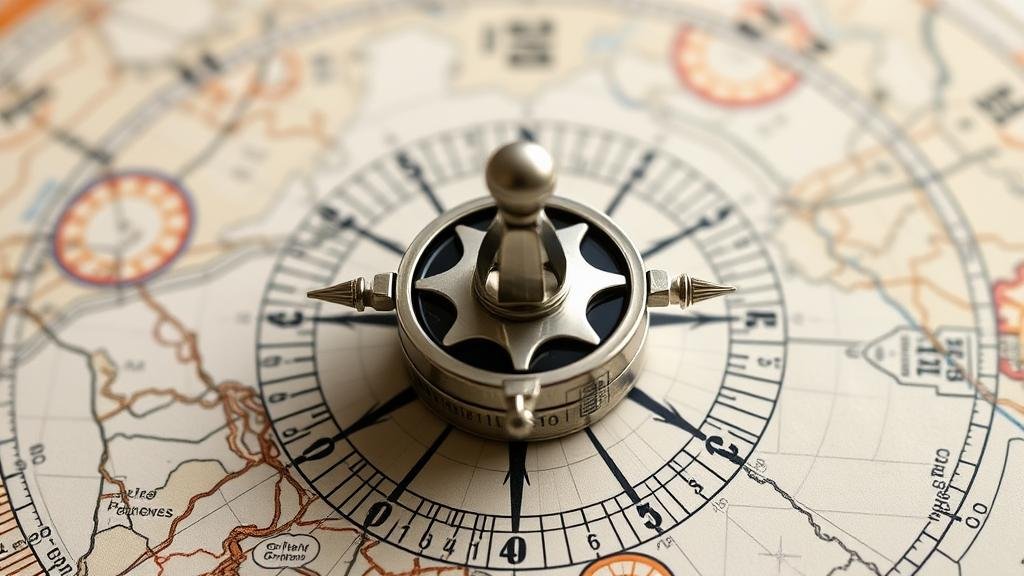Following Compass Misalignments Intentionally Marked on Maps
Following Compass Misalignments Intentionally Marked on Maps
Maps have long served as instrumental tools in navigation, providing travelers with essential data regarding terrain, distances, and routes. But, a lesser-known aspect of cartography involves the intentional misalignment of compass directions, marked on some maps for various reasons. This article will explore the phenomenon of following compass misalignments intentionally marked on maps, examining historical examples, the rationale behind their use, and the implications for navigation and exploration.
Understanding Compass Misalignments
Compass misalignment refers to discrepancies between true north–the geographic North Pole–and magnetic north–the direction a magnetic compass points. e misalignments can result from a multitude of factors including local geological anomalies, magnetic declination, and intentional design choices made by mapmakers. In some instances, these discrepancies are not merely unintended; they serve specific purposes in navigation and landscape interpretation.
Historical Context
The practice of intentionally marking compass misalignments has its roots in the early days of cartography. Many historical maps reflected the limitations of navigational technology at the time, leading to notable discrepancies in orientation. For example, maps from the 16th to 18th centuries often demonstrated considerable drift from true north. Cartographers strategically marked these misalignments to assist sailors and explorers accustomed to older methods of navigation but would also include a compass rose to indicate the adjustments required for accurate travel.
- Example 1: The Mercator Projection–Originally developed for maritime navigation, this projection distorts latitude and longitude lines, requiring navigators to adjust for compass discrepancies.
- Example 2: The Portolan charts–Used by Mediterranean sailors in the late Middle Ages, these maps included intentional inaccuracies to represent safe routes while avoiding known hazards.
Reasons for Misalignments
There are several reasons why mapmakers might intentionally introduce compass misalignments:
- Cultural Considerations: Some misalignments were influenced by cultural beliefs, with ancient societies mapping the world according to cosmological principles rather than empirical observations.
- Technical Limitations: The technology of the time did not allow for precise measurements, occasionally resulting in deliberate misalignments to correct for compass error as understood at that time.
- Navigational Hazards: Some maps were created with the intention of steering navigators away from specific dangers, marking certain routes as safer than others despite the compass inaccuracies.
Real-World Applications
Understanding the implications of compass misalignments becomes critical in various fields, from maritime navigation to geological studies. For example, contemporary sailors must account for differences in magnetic declination when plotting a course based on traditional maps, ensuring accuracy by understanding how these discrepancies emerged historically.
Case Study: The South Pacific Navigation
In the South Pacific, traditional navigators, known as wayfinders, rely heavily on star patterns, ocean swells, and bird movements. But, many modern maps include intentional misalignments to reflect historical practices. A study by Polynesian navigators indicated that their ancestral knowledge employed both physical and intangible markers to navigate accurately, despite compass misalignments prevalent in Western mapping.
Addressing Misconceptions
Many new navigators might assume that all maps are uniformly accurate representations of the world. Its imperative to recognize that even modern maps require users to be aware of compass misalignments. For example, geographers recommend that navigators occasionally verify their bearings using GPS technology, which can provide real-time data to compensate for any historical inaccuracies that may still exist in printed maps.
Actionable Takeaways
- Always check for local magnetic declination when utilizing maps for navigation, as this information may be marked explicitly or found using online resources.
- Consider historical navigation techniques and how they might enhance understanding of modern navigation, especially in regions where traditional practices persist.
- Educate yourself on the significance of compass rose markings on maps and how to interpret them correctly to improve navigational skills.
To wrap up, following compass misalignments intentionally marked on maps serves to highlight the intricate relationship between technology, history, and navigation. By understanding the complexities of these markings, navigators can improve their navigational skills and develop a deeper appreciation for the art of cartography.



